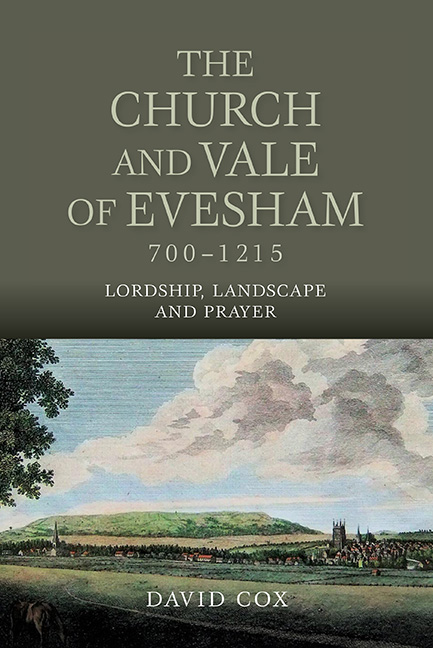Book contents
- Frontmatter
- Dedication
- Contents
- List of Illustrations
- Preface
- Timeline
- List of Abbreviations
- Part I From Minster to Abbey (701–1078)
- Part II Abbot Walter (1078–1104)
- Part III Twelfth-Century Themes (1104–1215)
- Afterword
- Appendix: The Abbots of Evesham to 1215
- Select Bibliography
- Index
- Miscellaneous Endmatter
- Frontmatter
- Dedication
- Contents
- List of Illustrations
- Preface
- Timeline
- List of Abbreviations
- Part I From Minster to Abbey (701–1078)
- Part II Abbot Walter (1078–1104)
- Part III Twelfth-Century Themes (1104–1215)
- Afterword
- Appendix: The Abbots of Evesham to 1215
- Select Bibliography
- Index
- Miscellaneous Endmatter
Summary
The Gesta abbatum
EVER since the early eleventh century Evesham abbey had attached importance to keeping up a narrative of its history, not just for the pleasure of contemplating the past but also as a useful collection of warnings and examples for the guidance of future policy. The Gesta abbatum retold the deeds of the abbots up to 1078, when Æthelwig died, and they were revised in the early twelfth century by a writer who also added his own continuation of the narrative, taking it up to the end of Walter's abbacy in 1104. The continuation was presumably written after Walter's death because it says that Walter did not complete the abbey church's central tower; the statement could not have been made so confidently by someone writing before Walter's abbacy was over. The work of the reviser and continuator is recognizable by his habit of opening a clause with the phrase qua de re (‘wherefore’). Seven clauses begin with those words in the Gesta text between c.970 and 1078 and one between 1078 and 1104, but the subsequent narrative does not have the phrase; it was therefore not the mark of any other contributor to the Gesta. The author of the 1078–1104 continuation was evidently at work between 1104 and c.1121 because he did not go on to record the deeds of Walter's successor Maurice, who died c.1121. We are unable to put a name to the 1078–1104 continuator but Dom David Knowles did suggest that he might have been the contemporary hagiographer Dominic, the only Evesham writer of the time who is known by name. It must be said, however, that there seems to be no resemblance of style or content between the plain continuation of 1078–1104 and Dominic's writings, all of which are hagiographical in purpose and rich in literary and religious colour.
The abbey seems to have lost interest in maintaining the Gesta abbatum by 1130 and no-one at Evesham troubled to bring them up to date again until the beginning of the next century. Written archives were becoming more useful than a subjective chronicle.
- Type
- Chapter
- Information
- The Church and Vale of Evesham, 700-1215Lordship, Landscape and Prayer, pp. 176 - 183Publisher: Boydell & BrewerPrint publication year: 2015

